The kinesin KIF1C transports APC-dependent mRNAs to cell protrusions
- PMID: 34493599
- PMCID: PMC8594469
- DOI: 10.1261/rna.078576.120
The kinesin KIF1C transports APC-dependent mRNAs to cell protrusions
Abstract
RNA localization and local translation are important for numerous cellular functions. In mammals, a class of mRNAs localize to cytoplasmic protrusions in an APC-dependent manner, with roles during cell migration. Here, we investigated this localization mechanism. We found that the KIF1C motor interacts with APC-dependent mRNAs and is required for their localization. Live cell imaging revealed rapid, active transport of single mRNAs over long distances that requires both microtubules and KIF1C. Two-color imaging directly revealed single mRNAs transported by single KIF1C motors, with the 3'UTR being sufficient to trigger KIF1C-dependent RNA transport and localization. Moreover, KIF1C remained associated with peripheral, multimeric RNA clusters and was required for their formation. These results reveal a widespread RNA transport pathway in mammalian cells, in which the KIF1C motor has a dual role in transporting RNAs and clustering them within cytoplasmic protrusions. Interestingly, KIF1C also transports its own mRNA, suggesting a possible feedback loop acting at the level of mRNA transport.
Keywords: RNA localization; RNA transport; cytoplasmic protrusions; local translation.
© 2021 Pichon et al.; Published by Cold Spring Harbor Laboratory Press for the RNA Society.
Figures
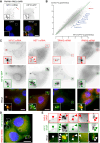
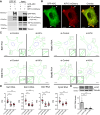
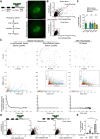

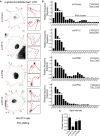
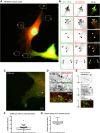
Similar articles
-
A KIF1C-CNBP motor-adaptor complex for trafficking mRNAs to cell protrusions.Cell Rep. 2025 Mar 25;44(3):115346. doi: 10.1016/j.celrep.2025.115346. Epub 2025 Feb 20. Cell Rep. 2025. PMID: 39982819 Free PMC article.
-
Localization of Kif1c mRNA to cell protrusions dictates binding partner specificity of the encoded protein.Genes Dev. 2023 Mar 1;37(5-6):191-203. doi: 10.1101/gad.350320.122. Epub 2023 Mar 1. Genes Dev. 2023. PMID: 36859340 Free PMC article.
-
A KIF1C-CNBP motor-adaptor complex for trafficking mRNAs to cell protrusions.bioRxiv [Preprint]. 2024 Jun 27:2024.06.26.600878. doi: 10.1101/2024.06.26.600878. bioRxiv. 2024. Update in: Cell Rep. 2025 Mar 25;44(3):115346. doi: 10.1016/j.celrep.2025.115346. PMID: 38979199 Free PMC article. Updated. Preprint.
-
RNA transport from transcription to localized translation: a single molecule perspective.RNA Biol. 2021 Sep;18(9):1221-1237. doi: 10.1080/15476286.2020.1842631. Epub 2020 Nov 13. RNA Biol. 2021. PMID: 33111627 Free PMC article. Review.
-
mRNA transport in dendrites: RNA granules, motors, and tracks.J Neurosci. 2006 Jul 5;26(27):7139-42. doi: 10.1523/JNEUROSCI.1821-06.2006. J Neurosci. 2006. PMID: 16822968 Free PMC article. Review.
Cited by
-
mRNA Localization to the Endoplasmic Reticulum in Plant Endosperm Cells.Int J Mol Sci. 2022 Nov 4;23(21):13511. doi: 10.3390/ijms232113511. Int J Mol Sci. 2022. PMID: 36362297 Free PMC article. Review.
-
Adenomatous Polyposis Coli (APC) in cell migration.Eur J Cell Biol. 2022 Jun-Aug;101(3):151228. doi: 10.1016/j.ejcb.2022.151228. Epub 2022 Apr 22. Eur J Cell Biol. 2022. PMID: 35483122 Free PMC article. Review.
-
Folylpolyglutamate synthetase mRNA G-quadruplexes regulate its cell protrusion localization and enhance a cancer cell invasive phenotype upon folate repletion.BMC Biol. 2023 Feb 1;21(1):13. doi: 10.1186/s12915-023-01525-1. BMC Biol. 2023. PMID: 36721160 Free PMC article.
-
Translation of unspliced retroviral genomic RNA in the host cell is regulated in both space and time.J Cell Biol. 2025 Apr 7;224(4):e202405075. doi: 10.1083/jcb.202405075. Epub 2025 Jan 27. J Cell Biol. 2025. PMID: 39868815 Free PMC article.
-
Regulation and outcomes of localized RNA translation.Wiley Interdiscip Rev RNA. 2022 Nov;13(6):e1721. doi: 10.1002/wrna.1721. Epub 2022 Feb 14. Wiley Interdiscip Rev RNA. 2022. PMID: 35166036 Free PMC article. Review.
References
Publication types
MeSH terms
Substances
LinkOut - more resources
Full Text Sources
Molecular Biology Databases
Research Materials
